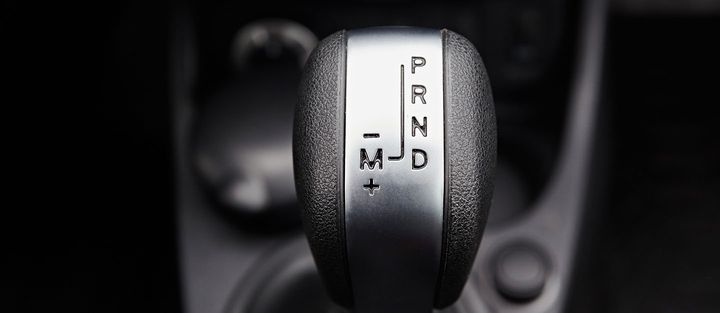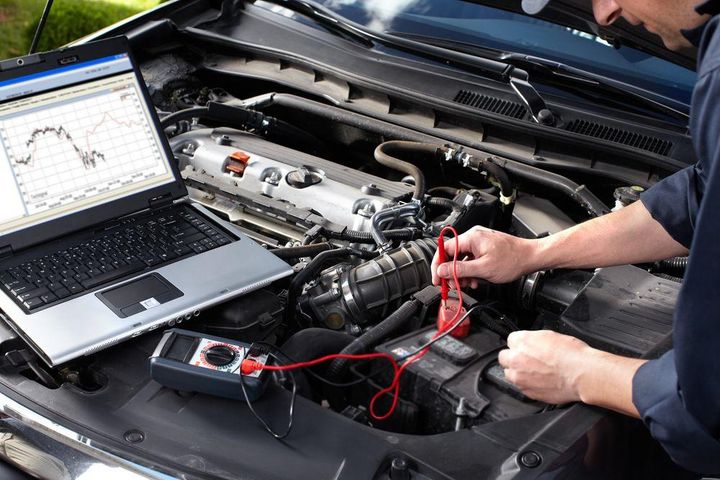


An automatic transmission is a complex system that is responsible for shifting gears in a vehicle without the need for manual input from the driver. It uses a combination of hydraulic and mechanical components to transfer power from the engine to the wheels, allowing for smooth and efficient gear changes. When an automatic transmission fails to shift into higher gears, it can be a frustrating and potentially dangerous issue that needs to be addressed promptly.

There are several common causes that can lead to an automatic transmission's failure to shift into higher gears. Let's explore them in detail:
| Cause | Description |
|---|---|
| Low Transmission Fluid Level | Insufficient fluid can cause poor hydraulic pressure, preventing the transmission from shifting properly into higher gears. |
| Worn Out Transmission Bands | The bands that connect the gears can wear out over time, leading to slippage and failure to shift into higher gears. |
| Faulty Solenoids | The transmission solenoids control fluid flow and apply hydraulic pressure to engage gears. Malfunctioning solenoids can prevent upshifts. |
| Torque Converter Issues | Problems with the torque converter, which transfers power from the engine, can disrupt the transmission's ability to shift smoothly. |
| Contaminated Transmission Fluid | Old, dirty fluid can cause sludge buildup, clogging passages and obstructing smooth gear changes. |
Transmission fluid plays a crucial role in providing hydraulic pressure, which is essential for smooth gear changes. When the fluid level drops, the transmission may struggle to generate enough pressure to engage the higher gears, leading to slippage or delayed shifts.
The transmission bands are responsible for connecting the gears within the transmission. Over time, these bands can stretch or become excessively worn. As a result, the transmission may fail to hold the higher gears, causing the vehicle to slip back into lower gears or remain stuck in a lower gear range.
Solenoids are electromechanical components that control the flow of transmission fluid and apply hydraulic pressure to engage specific gears. If one or more solenoids malfunction, it can disrupt the transmission's ability to shift into higher gears smoothly.
The torque converter transfers power from the engine to the transmission. A worn or damaged torque converter can cause slippage, vibrations, or even complete transmission failure, preventing the transmission from shifting properly.
Contaminated or old transmission fluid can lead to sludge buildup, clogging passages and obstructing smooth gear changes. This can be particularly problematic if the transmission fluid has not been changed according to the manufacturer's recommended service intervals.
When a customer brings their vehicle to my shop with this issue, I follow a systematic diagnostic approach to pinpoint the root cause:
Check the transmission fluid level and condition. If the fluid is low, burnt, or contaminated, it's often the primary culprit, and a fluid change or flush may be necessary.
Listen for any unusual noises coming from the transmission during gear shifts. Whining, grinding, or buzzing sounds can indicate internal wear or damage, such as worn bearings or gears.
Connect an OBD2 scanner to the vehicle's diagnostic port to check for any transmission fault codes. These codes can provide valuable insights into specific issues, such as faulty solenoids or sensor problems.
Observe the transmission's behavior during test drives. If the transmission slips out of gear or experiences delayed engagements, it may indicate worn bands or torque converter problems.
Once the root cause has been identified, various repair procedures may be recommended, depending on the severity of the issue:
| Repair Procedure | Description |
|---|---|
| Transmission Fluid Change/Flush | If the transmission fluid is contaminated or old, a complete fluid change or flush is typically the first step. This involves draining the old fluid and refilling the transmission with fresh, high-quality fluid of the correct type and quantity. |
| Solenoid Replacement | In cases where faulty solenoids are the culprit, they may need to be replaced to restore proper hydraulic control and gear shifting. |
| Transmission Band Adjustment/Replacement | For worn transmission bands, adjustment or replacement may be necessary. In some cases, the bands can be adjusted to compensate for wear, but in severe cases, they may require complete replacement. |
| Torque Converter Repair/Replacement | If the torque converter is damaged, it often needs to be rebuilt or replaced by a transmission specialist. This can be a costly repair, but it's essential to ensure smooth power transfer and prevent further transmission damage. |
| Complete Transmission Rebuild/Replacement | In extreme cases, a complete transmission rebuild or replacement may be required. This involves disassembling the transmission, inspecting and replacing worn or damaged components, and reassembling it with new gaskets, seals, and fluids. |
If the transmission fluid is contaminated or old, a complete fluid change or flush is typically the first step. This involves draining the old fluid and refilling the transmission with fresh, high-quality fluid of the correct type and quantity. This procedure can help remove sludge buildup and restore proper hydraulic pressure for smooth gear shifts.
In cases where faulty solenoids are the culprit, they may need to be replaced to restore proper hydraulic control and gear shifting. Solenoids are responsible for controlling the flow of transmission fluid and applying hydraulic pressure to engage specific gears. If one or more solenoids malfunction, it can disrupt the transmission's ability to shift into higher gears smoothly.
The transmission bands are responsible for connecting the gears within the transmission. Over time, these bands can stretch or become excessively worn. In some cases, the bands can be adjusted to compensate for wear, but in severe cases, they may require complete replacement. Worn bands can lead to slippage and failure to shift into higher gears.
The torque converter transfers power from the engine to the transmission. If the torque converter is damaged, it often needs to be rebuilt or replaced by a transmission specialist. This can be a costly repair, but it's essential to ensure smooth power transfer and prevent further transmission damage. A faulty torque converter can cause slippage, vibrations, or even complete transmission failure, preventing the transmission from shifting properly.
In extreme cases, a complete transmission rebuild or replacement may be required. This involves disassembling the transmission, inspecting and replacing worn or damaged components, and reassembling it with new gaskets, seals, and fluids. This is typically the most expensive repair option but may be necessary if the transmission has sustained significant internal damage.
To avoid costly repairs and prolong the life of your automatic transmission, preventive maintenance is crucial:

Follow the manufacturer's recommended service intervals for transmission fluid changes and filter replacements. Neglecting these routine maintenance tasks can lead to premature wear and potential transmission failure.
Avoid aggressive driving habits, such as frequent hard acceleration or towing beyond the vehicle's rated capacity. These practices can put excessive strain on the transmission and accelerate wear and tear.
Regularly check the transmission fluid level and top it up if needed, using the correct fluid type. This can help prevent issues from developing due to low fluid levels.
If you notice any signs of transmission trouble, such as slipping gears, delayed engagements, or unusual noises, have the transmission inspected by a professional as soon as possible. Addressing issues early can prevent further damage and save you from more expensive repairs down the line.
The cost of repairing an automatic transmission that is not shifting into higher gears can vary significantly depending on the specific issue and the extent of the repair required. Here are some general cost estimates:
| Repair | Cost Range |
|---|---|
| Transmission Fluid Change | $100 - $300 |
| Solenoid Replacement | $300 - $800 per solenoid |
| Transmission Band Adjustment | $500 - $1,200 |
| Torque Converter Replacement | $500 - $1,000 |
| Complete Transmission Rebuild | $1,500 - $4,000 |
| New Transmission (Remanufactured) | $1,800 - $3,500 |
It's important to note that these costs can vary based on the vehicle's make, model, and labor rates in your area. Additionally, some transmission repairs may require specialized tools and equipment, which can further increase the overall cost.
To get an accurate estimate for your specific situation, it's recommended to obtain multiple quotes from reputable transmission shops in your area. This will allow you to compare prices and ensure you're getting a fair deal.
An automatic transmission not shifting into higher gears can be a frustrating and potentially costly issue if left unaddressed. By understanding the common causes, diagnostic steps, repair procedures, and preventive maintenance measures, you can better navigate this problem and make informed decisions about your vehicle's transmission health.
Remember, regular maintenance and addressing issues promptly can go a long way in preventing more severe and expensive transmission problems down the road. If you're ever unsure about the condition of your transmission or the appropriate course of action, don't hesitate to consult with a qualified mechanic or transmission specialist.
Proper care and attention to your automatic transmission will not only ensure a smoother driving experience but also contribute to the longevity and reliability of your vehicle.
Worn out transmission bands or low/contaminated transmission fluid can cause an automatic transmission to slip out of gear. This results in a loss of power transfer and the transmission not holding the intended gear.
Check the fluid color - it should be bright red or pinkish, not dark or cloudy. Also, smell the fluid - if it has a burnt odor, it needs to be changed.
While topping up transmission fluid is possible, a complete fluid change or flush should be done by a professional mechanic who can properly drain and refill the transmission.
A whining noise from the transmission often indicates low fluid level or issues with the torque converter. It could also signal internal gear wear or bearing problems.
With proper maintenance, a rebuilt or replaced transmission can last 100,000 miles or more. However, driving habits and conditions play a big role in longevity.
It's generally not recommended to continue driving with a known transmission issue, as it can lead to further damage and expensive repairs down the line.
Low or contaminated fluid, towing heavy loads, excessive stop-and-go driving, or internal transmission problems can all contribute to overheating.
The cost can vary significantly based on vehicle make/model, but a new (remanufactured) transmission typically ranges from $1,800 to $3,500 including labor.
For manual transmissions, regularly check and change the gear oil as per the manufacturer's recommendations. Also, avoid resting your hand on the shift knob while driving.
Yes, a slipping transmission or one that doesn't shift properly can negatively impact fuel economy as the engine works harder to compensate.

Sarah isn't your average gearhead. With a double major in Mechanical Engineering and Automotive Technology, she dived straight into the world of car repair. After 15 years of turning wrenches at dealerships and independent shops, Sarah joined MICDOT to share her expertise and passion for making cars run like new. Her in-depth knowledge and knack for explaining complex issues in simple terms make her a valuable asset to our team.













